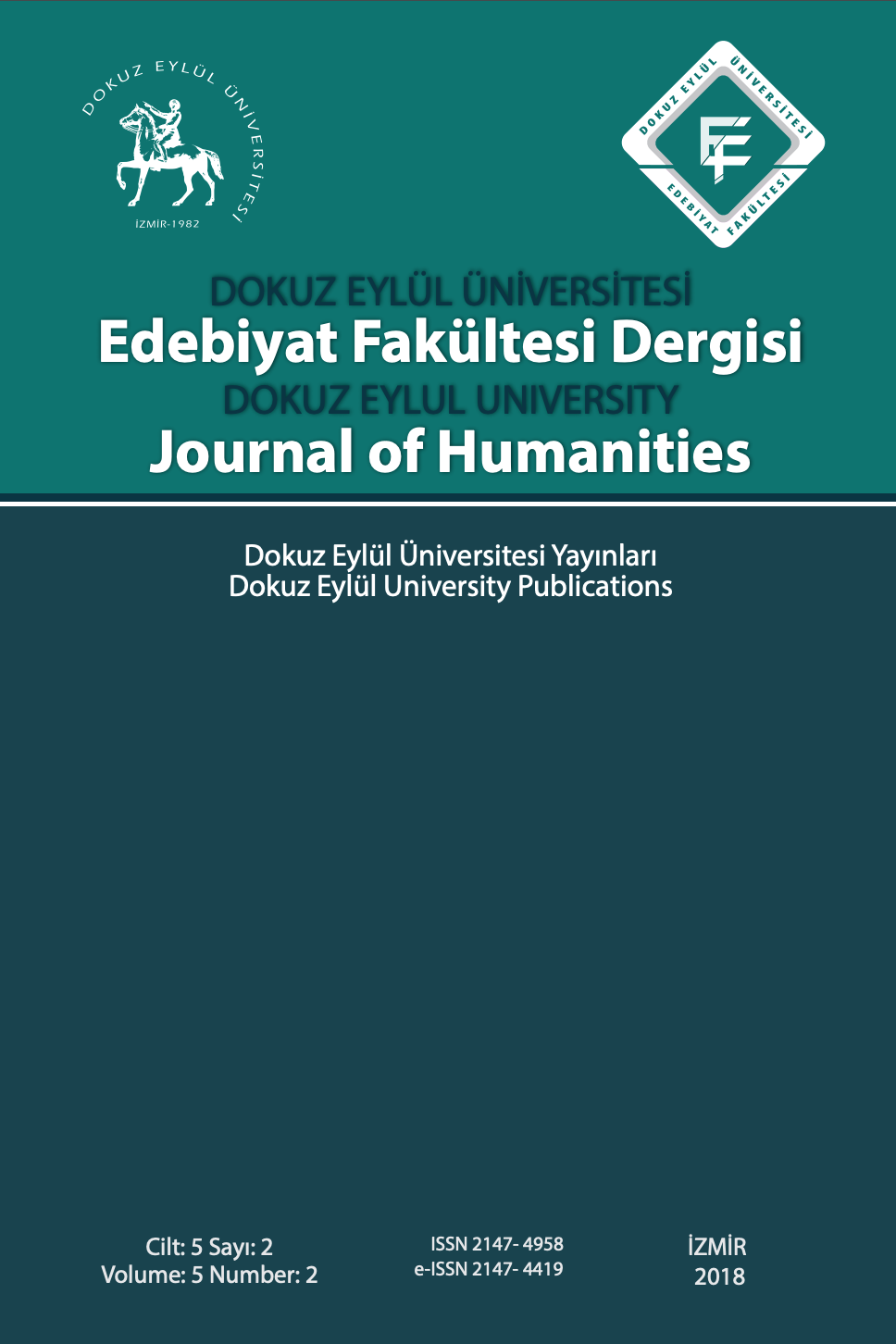“DİYONİZYAK BİR KIR EĞLENCESİ DEĞİLDİR”: RACHEL ROSENTHAL’IN PANGAEAN DREAMS: A SHAMANIC JOURNEY PERFORMANSINDA KİTONYEN
Rachel Rosenthal, Pangaean Dreams: A Shamanic Journey, Kitonyen, Camille Paglia
“THE DIONYSIAN IS NO PICNIC”: THE CHTHONIAN IN RACHEL ROSENTHAL’S PANGAEAN DREAMS: A SHAMANIC JOURNEY
___
- Arons, W. & May, T. J. (2012). Introduction. In W. Arons & T. J. May (Eds.), Readings in performance and ecology (pp. 1-10). Palgrave Macmillan.
- Chaudhuri, U. (1994). ‘There must be a lot of fish in that lake’: Toward an ecological theater. Theater, 25(1), 23-31.
- Chaudhuri U. (2001). Introduction: Instant Rachel. Rachel’s brain and other storms. Continuum.1-13.
- Lavey, M. A. (1994). Representing the body: An archetypal approach to the performance art of Rachel Rosenthal, Laurie Anderson, and Karen Finley. [Doctoral Dissertation, Northwestern University].
- Marranca, B. (1993). A cosmogrophy of herself: The autobiology of Rachel Rosenthal. The Kenyon Review, 15(2), 59-67.
- May, T.J. (2010). Kneading Marie Clements’ Burning Vision. Canadian Theatre Review 144 (1), 5-12. https://doi.org/10.3138/ctr.144.5
- Merriam-Webster. (n.d.). Chthonian. In Merriam-Webster.com dictionary. Retrieved January 16, 2023, from https://www.merriam- webster.com/dictionary/chthonian
- Nietzsche, N. (2000). The birth of tragedy (D. Smith, Trans.). Oxford University Press. (Original work published 1872).
- Paglia, C. (2001). Sexual personae: Art and decadence from Nefertiti to Emily Dickinson. Yale Nota Bene. (Original work published 1990).
- Raine, L. (2016). Living in Gaia: A 1989 interview with Rachel Rosenthal. Academia. https://www.academia.edu/28218327/LIVING_IN_GAIA_Interview _with_Rachel_Rosenthal
- Rosenthal, R. (1996). Pangaean dreams: A shamanic journey. In B. Marranca (Ed.), Plays for the end of the century (pp. 95-119). John Hopkins University Press.
- Taylor, A. (Dir.) (2008). Examined Life. Sphinx Productions.
- Thomas, A. (2016). The ecodramaturgy of Anna Halprin, Eeo Stubblefield, and Rachel Rosenthal. In M. Cheng & G. H. Cody (Eds.), Reading contemporary performance: Theatricality across genres (pp. 179- 181). Routledge.
- Thomas, A. E. (2013). An embodied ecodramaturgy: Ecology and performance in contemporary theater, dance, and performance art. [Doctoral Dissertation, Stanford University]. Proquest.
- Woodward, K. (2006). Performing age, performing gender. NWSA Journal, 18(1), 162-189.
- Woynarski, L. (2020). Ecodramaturgies: Theatre, performance and climate change. Palgrave Macmillan.
- ISSN: 2147-4958
- Yayın Aralığı: 2
- Başlangıç: 2011
- Yayıncı: Dokuz Eylul Üniversitesi Matbası
Kurtulus CENGİZ, Özgür Emrah GÜREL
“RUSYA SAVAŞ AÇACAK MI AÇMAYACAK MI?”:JAMES YEAMES’IN DOĞU SORUNU ÜZERİNE RAPORU
Mehmet Şerif ERKEK, Yakup ÖZTÜRK
AB TASARRUFLARININ TÜRKÇE ÇEVİRİLERİNİN REVİZYON SÜRECİ
‘YARALARIYLA YAŞAYAN BİREYLER’: GENÇLERİN AİLE İÇİ ŞİDDET VE ŞİDDET DÖNGÜSÜNE BAKIŞI
DELHİ TÜRK SULTANLIĞI SARAYINDA CAYİN BİR ÂLİM: ṬHAKKURA PHERŪ VE ESERLERİ
Batıkan DEMİRTAŞ, Esra COKER KORPEZ
